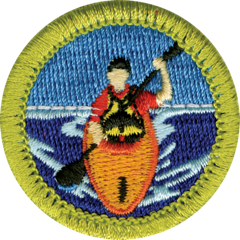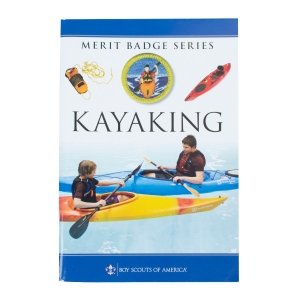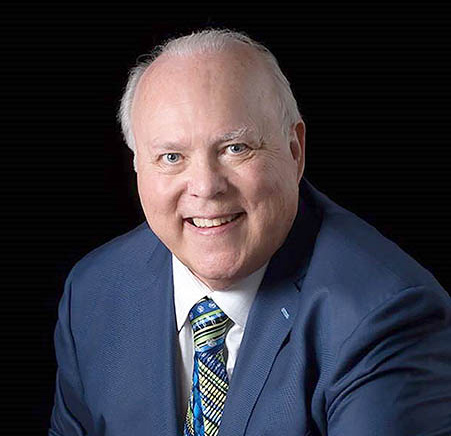Kayaking Merit Badge
Kayaking
Merit Badge
Boy Scouts of America Merit Badge Hub
Boy Scouts of America
Merit Badge Hub

Kayaking Merit Badge Overview
Kayaking has become one of the fastest-growing paddlesports in the United States. An estimated nine million Americans enjoy this sport. The most popular style of kayaking is recreational kayaking, followed by touring/sea kayaking, and whitewater kayaking. This merit badge will introduce you to recreational kayaking and help prepare you for advanced paddlesports such as tour/sea and whitewater kayaking.

Kayaking Merit Badge Requirements
The requirements will be fed dynamically using the scout book integration
1.
Do the following:
- (a) Explain to your counselor the hazards you are most likely to encounter while participating in kayaking activities, including weather and water-related hazards, and what you should do to anticipate, help prevent, mitigate, and respond to these hazards.
- (b) Review prevention, symptoms, and first-aid treatment for the following injuries or illnesses that can occur while kayaking: blisters, cold-water shock and hypothermia, heat-related illnesses, dehydration, sunburn, sprains, and strains.
- (c) Review the BSA Safety Afloat policy. Explain to your counselor how this applies to kayaking.
2.
Before doing requirements 3 through 8, successfully complete the BSA swimmer test: Jump feetfirst into water over the head in depth. Level off and swim 75 yards in a strong manner using one or more of the following strokes: sidestroke, breaststroke, trudgen, or crawl; then swim 25 yards using an easy, resting backstroke. The 100 yards must be completed in one swim without stops and must include at least one sharp turn. After completing the swim, rest by floating.
3.
Do the following:
- (a) Review the characteristics of life jackets most appropriate for kayaking and understand why one must always be worn while paddling. Then demonstrate how to select and fit a life jacket for kayaking.
- (b) Review the importance of safety equipment such as a signal device, extra paddle, sponge, bilge pump, flotation bags, and throw bag.
4.
Do the following:
- (a) Name and point out the major parts of a kayak.
- (b) Review the differences in the design between recreational, whitewater, and sea or touring kayaks. Include how length, width, stability, and rocker are involved in the design of each type.
- (c) Explain the care, maintenance, and storage of a kayak.
5.
Discuss the following:
- (a) How to use a kayak paddle.
- (b) Parts of a paddle.
- (c) The care and maintenance of a paddle.
6.
Using a properly equipped kayak with an open cockpit, a sit-on-top, or an inflatable kayak, do the following:
- (a) Safely capsize and perform a wet exit.
- (b) Reenter the kayak with assistance from a buddy boat.
- (c) Demonstrate a kayak-over-kayak rescue.
- (d) Demonstrate the HELP position.
- (e) Capsize the kayak, swim it and the paddle to shore, and empty water from the kayak with assistance if needed.
7.
As a solo paddler, use a properly equipped kayak to demonstrate the following:
- (a) Forward stroke
- (b) Reverse stroke
- (c) Forward sweep
- (d) Reverse sweep
- (e) Draw stroke
- (f) Stern draw
8.
As a solo paddler, use a properly equipped kayak to demonstrate the following:
- (a) Paddle a straight line for 15 to 20 boat lengths using appropriate strokes while maintaining trim and balance of the kayak.
- (b) Spin or pivot from a stationary position 180 degrees (half circle) to the right and left within two boat lengths.
- (c) Move abeam to the right 10 feet and to the left 10 feet.
- (d) Stop the boat in one boat length.
- (e) While maintaining forward motion, turn the kayak 90 degrees to the right and left.
- (f) Move the kayak backward three to four boat lengths using appropriate and effective reverse strokes.
- (g) Paddle the kayak in a buoyed figure 8 course around markers three to four boat lengths apart.

Get the Kayaking Merit Badge Pamphlet
Love the water?! If the answer is, “Yes!”, then this is the merit badge for you to earn!

Shop Kayaking Merit Badge Products
As the exclusive retailer of the BSA, 35% of every Scout Shop purchase supports the future of Scouting.
Discover more about "Kayaking"

MOVE OVER, CANOEING. Kayaking is here. Recreational kayaking’s popularity increased by 32 percent in the past three years, according to the 2013 Outdoor Participation Report published by the Outdoor Industry Association. And as of summer 2012 — a decade after the Kayaking BSA activity patch was introduced — America’s fastest-growing paddle sport now has its very own merit badge. Kayaking MB
To learn more about the badge and how to teach it, we caught up with Richard Thomas, the project leader for the Kayaking merit badge pamphlet, and Pat Noack, chairman of the BSA’s National Aquatics Task Force. Here’s what they had to say.
Where does the Kayaking merit badge fit into the advancement program?
The Kayaking merit badge teaches entry-level skills. “It’s designed as a flat-water experience — quiet water without significant wind, waves or current,” Noack says.
Scouts who are interested in whitewater kayaking should pursue the Whitewater merit badge after earning Kayaking. “In contrast to flat-water or quiet-water paddling, there’s a large range of skills that are necessary in whitewater kayaking,” Thomas says. “That really takes additional training from qualified Whitewater merit badge counselors.”
The new Kayaking merit badge doesn’t replace the Kayaking BSA award (which is worn on swim trunks) available to Boy Scouts, Venturers and adult leaders who want to get a taste of the sport. Find more information about this award at bit.ly/kayakingaward.
How hard is kayaking to learn?
If you’ve ever watched an experienced kayaker shoot a set of rapids, you may think kayaking is more difficult than other paddle sports. Think again. While those advanced skills do require plenty of practice, getting started with kayaking is actually easier than getting started with canoeing.
“The strokes required in kayaking are much fewer than in canoeing. In literally 30 minutes, you can teach the basic strokes Scouts need to learn to paddle a kayak in a straight line, turn or pivot it, or paddle it in reverse,” Thomas says.
Another advantage: the double-bladed paddle. “You’re doing synchronous movements on both sides of the boat,” Noack says. “That helps you stay in a straight line as a novice.”
How well do canoeing skills transfer?
“Many of the principles of paddling are the same for both canoeing and kayaking in terms of upper-body rotation and using the muscles of the upper torso and back,” Thomas says.
Which kind of kayak should be used?
The merit badge requirements allow for several types of boats: hard-shell kayaks, sit-on-tops and inflatables. A hard-shell kayak with a large, open cockpit may be the best option if you have a choice. “The advantage of this type of boat is that it can be used in practically any conditions,” Thomas says. Scouts will get wet using sit-on-tops, so those are better in warmer climates. Some inflatable kayaks can perform with the best hard-shell kayaks, while others are harder to turn and offer more resistance when paddling.
Which teaching techniques work?
Noack and Thomas say kayaking games make learning fun and easy. For example, Scouts can play Follow the Leader with their counselor or navigate a simple slalom skiing course to practice paddling techniques. Other ideas:
Simon Says: The counselor gives commands like “Simon says, ‘Move your boat to the right’ ” or “Pivot to the left.”
Sponge Tag: Scouts in kayaks try to tag each other with a wet sponge.
Red Light, Green Light: The counselor stands on shore. When he says “green light,” the boats move toward shore. When he says “red light,” they must stop within a boat’s length.
For more games, see the American Canoe Association’s book, Kayak and Canoe Games.
Where can you find counselors?
While kayaking is relatively easy to learn, your Scouts will need qualified merit badge counselors who have been approved by your council’s advancement committee. Where can you find them? “Your council aquatics committee would be the first place to go,” Thomas says. “They, in turn, might be aware of paddling clubs, many of which are affiliated with the American Canoe Association.”
The ACA, which was deeply involved in the development of the new badge, has several thousand trained kayaking instructors. It has also been setting standards for paddle-sport education for more than 100 years. “That’s really one of the beauties of working with the ACA on this badge,” Noack says. “They have a good pool of instructors that are possible to tap into as merit badge counselors.” (You can find local ACA kayaking instructors through the ACA website, americancanoe.org.)
Within Scouting, Noack recommends instructors who have completed the Aquatics Supervision: Paddle Craft Safety course, which includes a kayaking module. Another good resource is Aquatics Supervision (No. 34737), the primary resource for aquatics at the unit level.
Thomas says just having a kayak or watching a video isn’t enough. “Individuals who are counselors for this merit badge should be experienced and should have had some training in teaching kayaking, so that we can maximize both the safety and the quality of the instruction,” he says.
Fortunately, groups like the ACA are full of kayakers who love to share their enthusiasm for the sport. Many of them, like Thomas, first tried kayaking at Scout camp, so they understand the merit badge program — even though they never got a chance to earn the Kayaking merit badge.
What about gear?
Plenty of kayaking equipment is available for rental at local marinas, many of which offer Scouting discounts. Check out this feature highlighting some of our favorite kayaking gear on the market.




